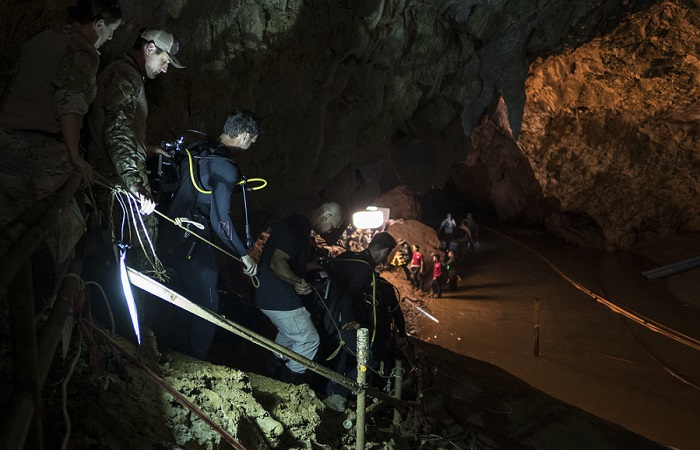Safety Lessons from the Dramatic Thailand Cave Rescue
A relatively minor injury under normal circumstances can have life-threatening consequences underground.
A relatively minor injury under normal circumstances can have life-threatening consequences underground.

When the Wild Boars youth soccer team became trapped in a flooded cave on June 23, the entire world watched the international rescue efforts during the nearly three strenuous weeks it took to get the 12 teen players and their 25-year-old coach to safety.
Natural disasters make us pay attention, because at any point one of us could be asked to respond in a potentially life-threatening situation. Would we have what it takes to survive and to keep others safe?
National Safety Council tracks disaster deaths for good reason. These are events with multiple casualties stemming from extreme weather or other conditions, and are often front-page news. Just last week, historic flooding was followed by a deadly heatwave in Japan that impacted thousands of residents and killed over 200 people. Because of climate change, we may see extreme events like this happen with more frequency than before.
Flooding also was the culprit that landed the Wild Boars in trouble as they sought refuge in caves – and hampered rescue efforts, requiring the services of Thai SEALs and an international contingent of expert cave divers. As many in the safety industry know, confined space brings its own set of risks and hazards. Thai Navy SEAL Saman Kunan died from lack of oxygen after he delivered oxygen tanks to the boys and was trying to make it out of the cave.
Perhaps it’s not surprising that the well-known slogan, “Safety First,” was popularized by Dr. Joseph A. Holmes, who was appointed the first director of the Bureau of Mines by President William H. Taft. At the turn of the century, much like today, the mining industry was one of the most dangerous places to work. Cave-ins, explosions, gas leaks, falling rocks and falls claimed the lives of countless miners over the decades.
A relatively minor injury under normal circumstances can have life-threatening consequences underground and require a major rescue. It’s certainly one of the reasons the rescue efforts in the Tham Luang caves had to proceed with extreme caution, given how fatigued and malnourished the boys were.
Caving anywhere can be risky. Injuries can result from a lack of experience or training, fatigue or poor judgement. Falls also are a common danger. While ice caves are an attractive idea during the summer months, it’s actually one of the more dangerous times to explore them due to melting snow and ice that can lead to collapse.
Organizations like the National Speleological Society are dedicated to safe cave exploration, as well as cave rescues, and of course the right training, mindset and equipment are key to enjoying natural wonders, whether above ground or below.
The vivid story of the cave rescue will probably stay with us for a while, and maybe even make those considering a spelunking adventure to think twice. But for anyone camping, hiking or enjoying the outdoors, remember: Flash floods are the No. 1 weather-related killer in the U.S., so take some precautions:
And, if your sense of adventure calls for an underground experience, always follow the motto of responsible cavers: Take nothing but pictures, leave nothing but carefully placed footprints, kill nothing but time.
With a century-long legacy, the National Safety Council is a global center for safety expertise. Let's work together to align resources. We look forward to learning about ways we can join efforts to expand safety everywhere!
There are no items in your cart